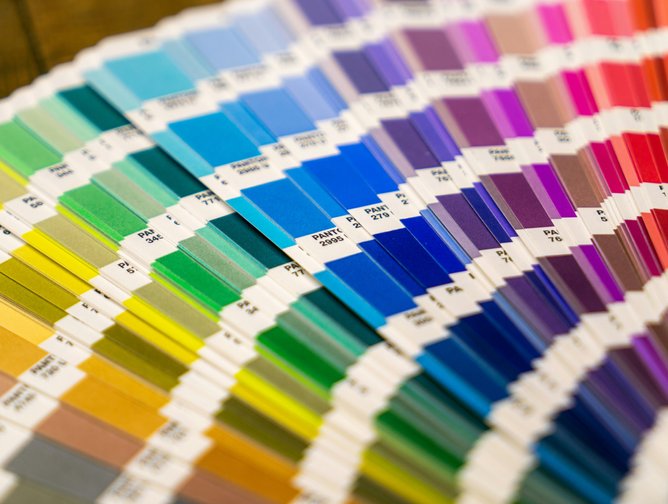Adobe PDF Print Engine: Dynamic Digital Textile Printing

The Adobe PDF Print Engine
Founded in 1982 by John Warnock and Charles Geschke, Adobe gives individuals and companies the technological tools to unleash their creativity and develop profound digital experiences.
Adobe PDF Print Engine, launched in 2006 is a software technology which is delivered to solution partners as a Software Development Kit (SDK).
These are the market-leading vendors who manufacture printing equipment and RIP products (Raster Image Processor) which directly drive digital inkjet/electrostatic presses, or indirectly drive the platesetters which produce the plates used in traditional flexographic, offset and screen presses.
Adobe PDF Print Engine is a sophisticated rendering technology that enhances the printing potential of every press.
It drives over 200,000 presses and proofers globally, including: offset, flexographic, electrostatic, nanographic, gravure and inkjet models.
Manufacturers can take advantage of Adobe PDF Print Engine by contacting one of the vendors listed on Adobe’s partner list.
Powering workflows across industry segments, the Adobe PDF Print Engine complements Adobe’s existing creative design innovations like Photoshop CC and InDesign CC.
The software boasts continually optimised algorithms that render complex graphics and handle variable printing faster than alternative platforms.
The platform's advanced colour technologies also enhance the efficiency and rendering of trapping, overprinting, transparency blending and spot colours, ensuring consistent quality.
For manufacturers that rely heavily on digital printing, the Adobe PDF Print Engine is a game-changer, powering superior efficiency, quality control and aesthetic results.
The solution is tailored to help manufacturers overcome three process areas where digital printing plays a critical role- print packaging, textile printing and industrial printing.
Print Packaging
The printing press is one of the oldest mass production machines in the world, created in the 1440s in Mainz, Germany and taking root through the mass dissemination of the bible.
An agent of phenomenal change, the printing press is famous for enhancing literacy rates across Europe and increasing the accessibility of literature, art, news and politics globally.
Over the last five hundred years, its appearance, capabilities and applications have continually evolved.
In the manufacturing industry, printing is essential to a highly specialised, ubiquitous and frequently overlooked process- packaging.
According to Statista, the global market value of packaging materials worldwide will reach approximately US$1.15tr by 2030 across all regions. Leading this will be the Asia-Pacific region, contributing an estimated US$392bn.
During packaging, precise technical requirements must be balanced with persuasive branding and design, as both are pivotal to product success.
Take food and beverage manufacturing for instance. Why, before tasting, do customers opt for one brand of blueberry yoghurt over another?
Because of the delicious, exciting promise of the packaging.
Products generate interest, reinforce brand values and secure long-term loyalty through packaging, which if perceived as confusing, low-quality or inconsistent can drive customers away.
Imagine now that you bought that blueberry yoghurt for the first time, and discovered that it lacked structural integrity or contained defects.
With its contents all down your front, how enthusiastic are you likely to be about that brand moving forward?
With the amount of competition in the food and beverage industry, manufacturers cannot risk customers losing trust in the reliability of their offerings.
Defects also put entire product batches into question, which can lead to recalls or a need to redesign products, leading to debilitating financial costs and downtime.
Adobe has a long history of collaborating with the packaging industry, providing innovations to support every step of the manufacturing process, from design to marketing to label creation to print service providers.
Adobe Illustrator is the predominant authoring application used by packaging designers around the world.
Adobe's new Substance 3D software enables designers and brand owners to visualise photorealistic renditions of new products before they are even manufactured.
The PDF Print Engine helps manufacturers confront both the challenges of print packaging and the profound opportunities.
Print Packaging: The opportunities and challenges
03: Press registration
Misregistration between planes or plates leads to misaligned artefacts, text and graphics.
Misaligned packaging damages brand integrity, reflecting on the perception of the product and manufacturer.
Adobe’s PDF Print Engine is designed to protect against this, enabling enhanced insight into the registration process.

02: Compliance & accountability
Consumer demand and government regulations are driving greater accountability surrounding packaged goods.
The sustainability of packaging is an urgent focus, and as manufacturers move to recyclable and biodegradable materials, they must adapt to printing onto new textures and forms.
Manufacturers must also be mindful of their energy consumption in terms of the printing process itself.
Adobe’s PDF Print Engine enhances overall efficiency, helping to reduce energy use and enabling manufacturers to effectively adapt to the design needs of recyclable packaging.

01: Advances in colour & ink management
Extended colour gamut printing, spectral spot colours and inks are growing in popularity on print packaging. These processes require specific technological and process innovations.
Spectral spot colours for example can be precisely reproduced by adding Orange and/or Green and/or Violet inks (OCV) to traditional Cyan, Magenta, Yellow, and Black mixing (CMYK).
The process offers a broader range of colours than CMYK with enhanced accuracy.
Spot colour printing also offers coated and uncoated options, to ensure that consistent colour payoff can be achieved across a diversity of paper and product types.
Spectral spot colour printing requires a special premixed ink instead of process inks, along with a special printing plate on a press.
This technique works best with limited colours, when manufacturers are seeking absolute colour accuracy.

Adobe’s PDF Print Engine is making this process easier and more efficient, allowing manufacturers to embrace extended colour gamut printing, spectral spot colours and inks reliably and effectively.
Taking packaging from concept to manufacturing
The Adobe PDF Print Engine gives manufacturers the confidence and tools to successfully execute every type of packaging job.
Designers across the sector rely on Photoshop CC and Adobe Illustrator CC to build their branding, utilising the latest graphic effects and design technology.
The PDF Print Engine seamlessly manages multiple complex elements, freeing designers to explore innovative visual concepts without fretting over feasibility.
Taking packaging from concept to manufacturing is an intricate process that is defined by continuous change and ongoing collaboration.
Packaging is continually evaluated, improved, revised and expanded upon, more so than any other graphic process.
Adobe’s PDF Print Engine makes the end-to-end process more reliable by using the same core Adobe technology across the workflow: Illustrator for design, Acrobat for review and approval, PDF Print Engine for final rendering and manufacturing.
Textile Printing
Direct-to-textile 3D printing has been around longer than you might think. First developed alongside the advent of additive manufacturing in the 1980s, it enables manufacturers to customise fabrics, reliably automate consistent design patterns and create tactile surface effects.
In 2022 the size of the global digital textile printing market was valued at US$ 2.69m.
The market is expected to grow at a CAGR rate of 14.4% in the years leading to 2030. Digital textile printing is a growing field of innovation in apparel manufacturing.
Apparel manufacturing is an intensely oversaturated and competitive market that is reckoning with its responsibilities to enhance sustainability and source labour ethically.
Existing models of competitive pricing- like fast fashion- are built on overlooking these two critical areas, making them damaging and unsustainable.
Apparel manufacturers seeking to remain competitive whilst fulfilling these responsibilities are looking to technology and customizability as new frontiers. Additive manufacturing is creating new avenues for manufacturers to offer bespoke, intricate and customised textile products.
- Adidas is utilising additive manufacturing for their shoes, 3D-printing the midsole of their dynamic 4D FWD running shoes.
- Nike is doing the same, creating customised footwear for individual athletes. The leading fashion manufacturer scans athletes' feet to create personalised shoes tailored to individuals' comfort and biomechanics to enhance athletic performance.
- Under Armour has used additive manufacturing to enhance the innovation and design of its athletic apparel and footwear.
- Chanel has adopted 3D printing to achieve newfound complexity in its accessories and jewellery, complexity that isn’t possible via traditional manufacturing methods.
- Balenciaga has incorporated additive manufacturing into creating futuristic and structured elements for its high-fashion garments.
White ink, so iconic to 3D printing, has a wealth of creative applications.
Manufacturers can use it to build show-stopping 3D fabric structures, create entirely new materials and add surface pattern prints to coloured fabrics.
Adobe has been pushing these frontiers in digital textile printing since the 1980s.
In both small and large format applications, Adobe’s portfolio like its design-to-manufacture workflow and inkjet technology has shaped the evolution of digital textile printing.
Adobe has assisted brands, textile designers and converts across the digital textile industry, shaping the development of OEMs that produce digital textile devices, print service providers and textile print mills.
The PDF Print Engine: Fuelling OEMs Competitive Ambitions
The Adobe PDF Print Engine is helping digital textile printing OEMs reach an important long-term ambition, to compete with analogue processes in terms of cost per square metre and speed.
By having every aspect of the end-to-end design-to-manufacture workflow employing the same technology, this process is streamlined, made more accessible and efficient for manufacturers.
The PDF Print Engine employs the same technologies essential to Adobe Acrobat, Photoshop and Illustrator. Because of this, it can be effortlessly integrated with Adobe PDF when reproducing prints of any colour, size or gradient.
“Digital textile printing is growing fast, and designers are eager to take advantage of the technology to reproduce rich graphics on a wide range of fabrics: roll-to-roll, garment, home décor and signage” says Mike Scrutton, Director of Print Technology and Strategy at Adobe.
“PDF is superior to image file formats traditionally used in textile printing – TIFF and JPEG. PDF enables robust colour management.
It also maintains text, images, complex graphic elements and their interactions, at the highest level of abstraction.”
As Mike indicates, what truly makes the Adobe PDF Print Engine so versatile and valuable to digital textile printing is the way it expands on the PDF, commonly used throughout the industry.
PDF: The file format dominating design
Adobe famously invented the PDF, the Portable Document Format to share document data in its original file format.
Today we take the PDF for granted, but its ability to preserve combined artwork, mixed content, colour and metadata all in one file has dramatically impacted the design landscape.
PDF is increasingly popular as a file format in digital textile printing workflows.
The Adobe PDF Print Engine along with Adobe PDF, Photoshop and Illustrator comprise a complete end-to-end workflow for manufacturers.
By utilising PDF files manufacturers can reproduce vectors, fonts, gradients, motifs and more without fear of pixellation.
Colours are requested and printed with enhanced accuracy, and cutting outlines for cut and sew applications can be included in the same PDF file as the graphics.
“This is a longstanding principle in prepress, going back to the desktop publishing revolution of the 1980s.” Mike adds.
“The net is that when text, images and graphics are rendered by Adobe PDF Print Engine, the resulting bitmap – which instructs the inkjet heads where to deposit the droplets – takes full advantage of the colour gamut of the press, and also its other capabilities (e.g. screening, variable dot sizes, etc.).”
Adobe PDF files provide a convenient platform-agnostic format for the complete design-to-manufacture workflow.
PDF files can be easily viewed using Adobe Acrobat, with the option to add feedback and commentary without impacting printing.
The PDF retains all this information at every stage of the review and approval process, ensuring this information is readily available upon manufacturing.
Industrial Printing
Industrial printing is relatively new, referring to ink imprinted onto products as part of the manufacturing process. Examples include the printing on folded cartons, parts, cylindrical products like wine bottles, fabric decor, promotional items, shipping boxes and wallpaper.
Industrial printing has undergone rapid transformation, thanks to the fusion of Industry 4.0 with inkjet technology.
Industrial printing historically has been achieved through traditional methods like flexography, gravure, rotary screen printing and indirect pad printing, where the ink is still deposited onto inexpensive non-paper surfaces.
In manufacturing operations, these methods have largely been replaced by Inkjet printing, which takes the technology of your home or office printer to an industrial scale.
Adobe’s PDF Print Engine: driving the growth of Inkjet printing
Inkjet printing comes in two primary forms: Thermal Bubble Technology and Piezoelectric Technology.
Thermal Bubble Technology generates vapour buzzles within an ink-filled chamber whilst Piezoelectric Technology propels ink drops by putting deformed materials that respond mechanically to electrical stress under an electric field.
Through millions of minuscule ink droplets- which are smaller than the diameter of a human hair- manufacturers can print complex, precise designs to their heart's content.
It’s critical to note that Inkjet printing is so much more than just printing. Through the technology, manufacturers can apply coatings, construct micro and macro structures and deposit extremely specific amounts of functional materials.
This is why Industry 4.0 is having such a transformative impact, taking inkjet printing out of isolation. By integrating the process into the digital realm, manufacturers have been able to enhance printing quality and performance through data.
IoT-enabled printers will connect to a host of network devices, allowing data to flow throughout the production line.
With AI algorithms capable of processing this data, Inkjet printers can better meet the strict uniformity and precision demanded by industrial printing.
Adobe’s PDF Print Engine is a critical part of this technological revolution, elevating the inkjet printing process.
The engine enables manufacturers to align software across their entire industrial print workflow, ensuring predictability and consistency.
Printing and manufacturing: the need to stay competitive
As the apparel industry continues to embrace creative digital applications, a new paradigm is emerging for digital textile printing and additive manufacturing.
The Adobe PDF Print Engine, a truly integrated, holistic design and printing solution, gives manufacturers increased precision, oversight and access throughout all stages of the printing process.
Tailored to a multitude of different industry segments, Adobe understands that content- be it industrial in the form of serial numbers or decorative in the form of artwork- is at the heart of printing in manufacturing.
Ensuring that packaging is structurally sound, the risk of defects is mitigated and designs are consistent is essential to maintaining customer loyalty and brand integrity.
As industries reliant on packaging, textile printing and industrial printing grow more competitive, the Adobe PDF Print engine gives manufacturers the versatility and oversight to plan ahead.
******
Make sure you check out the latest edition of Manufacturing Digital and also sign up to our global conference series - Procurement & Supply Chain 2024 & Sustainability LIVE 2024
******
Manufacturing Digital is a BizClik brand.





